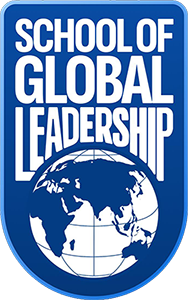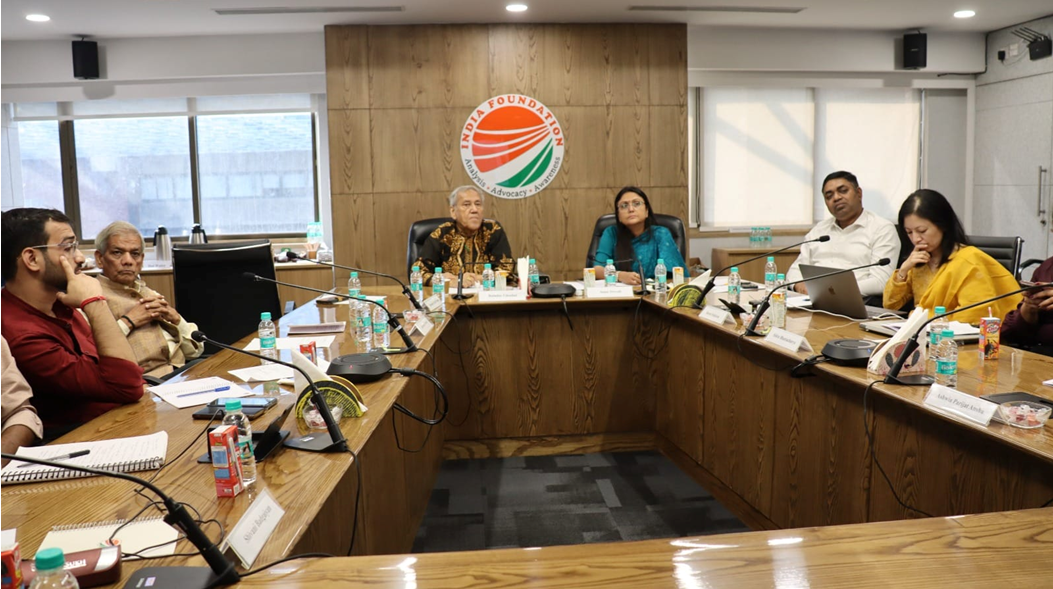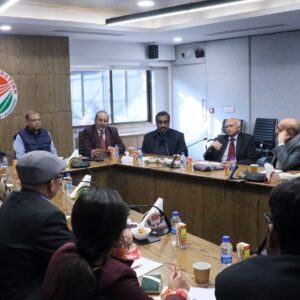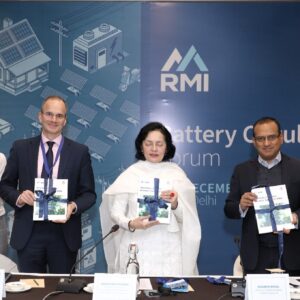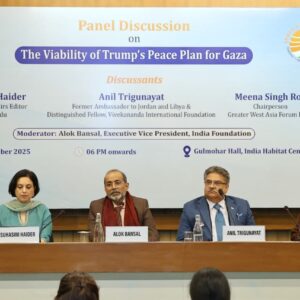India Foundation organised the 2nd Workshop on the ‘Impact of Kalinga on Champa in Southeast Asia’ on 28 October 2024 at India Foundation office. It was the second workshop under the ICSSR-sponsored project ‘Kalinga and Champa: Retracing Civilisational Linkages between India and Vietnam’, which was awarded to India Foundation. The Introductory Remarks were given by Dr Shristi Pukhrem, Deputy Director (Academics & Research), India Foundation followed by a Welcome Address by Dr Sonu Trivedi, Distinguished Fellow, India Foundation and Associate Professor, Zakir Husain Delhi College, University of Delhi.
Dr Sonu Trivedi emphasised on the critical role of the Indian influence in Southeast Asia since ancient times which grew through maritime trade that became a ‘cultural diffuser’ between Kalinga and Champa that took place in the waves of religious spread and highlighted how the dissemination of Hinduism, Buddhism, and later Islam introduced new languages, literature, art forms, architectural styles, and social norms to the region. The contributions of historians such as R.C. Majumdar, Kalidas Nag, and Henri Parmentier were acknowledged for shedding light on the depth of Indian cultural influence in Southeast Asia. Dr Trivedi acknowledged the significant contributions of French scholars such as Georges Maspero and J. Charpentier in advancing the understanding of the Champa civilization. She stressed on the importance of collaborative efforts among scholars, historians, and cultural enthusiasts in exploring the historical connections between India and Southeast Asia.
The Inaugural Address was delivered by Amb Sandeep Arya, Indian Ambassador to Vietnam. Amb Sandeep Arya shared his valuable insights on the historical connections between India and Vietnam. He highlighted the Champa civilization’s profound influence in Vietnam from the fourth to the fifteenth century, supported by archaeological findings from French and Indian scholars. The discussion delved into the architectural parallels between Indian and Champa temples, reflecting the deep cultural exchanges between the two regions. He also touched upon the harmonious coexistence of Buddhist and Hindu beliefs within the Champa civilization and noted the presence of the Cham minority in Vietnam, who still continue to preserve the legacy of this rich cultural heritage.
Amb Arya highlighted the Government of India’s initiatives in preserving and restoring Champa monuments, with a focus on the three groups of temples at My Son. The restoration efforts undertaken by the Archaeological Survey of India from 2017 to 2022 were emphasised, along with plans for future projects to further safeguard this heritage. He stressed the importance of comprehensive legal studies and analyses to deepen the understanding of the historical linkages between Indian and Champa civilizations. Additionally, he also underscored the potential for collaborative efforts between Indian scholars and universities to enhance research and foster a deeper appreciation of these historical connections.
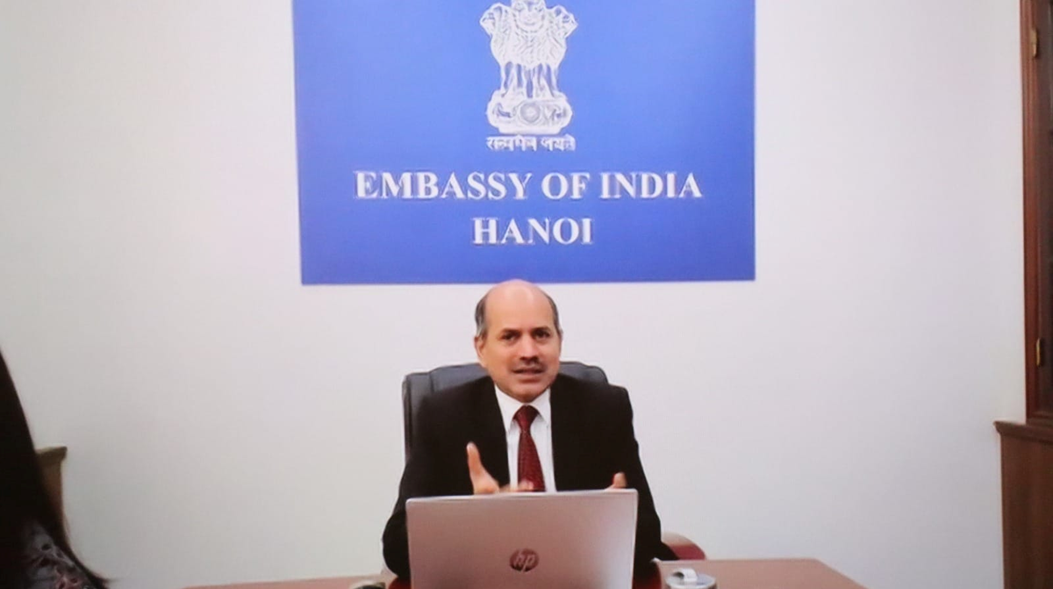
The Keynote Address of the Workshop was delivered by Amb Preeti Saran, Member, Governing Council, India Foundation and Former Ambassador of India to Vietnam. Amb Preeti Saran highlighted the importance of scholarly research in uncovering the ancient connections between India and Southeast Asia. She underscored the pivotal role of maritime trade in strengthening these historical ties. The discussion also focused on contemporary frameworks like the ASEAN-India Free Trade Agreement and the Comprehensive Strategic Partnership between India and Vietnam, which reflect the enduring relevance of these connections. She emphasised on the mutual trust, understanding, and alignment of interests between India and Vietnam, particularly in matters of security, sovereignty, and territorial integrity.
Amb Saran highlighted the resumption of nearly 56 weekly flights between India and Vietnam, marking a significant milestone in strengthening connectivity between the two nations that has sparked renewed enthusiasm among tourists, pilgrims, and businesses, driven by India’s liberal visa rule. She also underlined the importance of preserving shared heritage, citing the Government of India’s contributions to the restoration of historical sites in Vietnam’s Quang Nam Province as a testament to this commitment. She mentioned strengthening people-to-people connections and promoting cultural exchanges through mediums such as dance, drama, and music between the two nations and emphasised the enduring relevance of historical and contemporary ties, highlighting how the story of Rama continues to be extensively portrayed across ASEAN countries. The workshop was viewed as an opportunity to leverage these ancient links as a foundation for addressing present-day challenges and fostering mutual independence and cooperation.
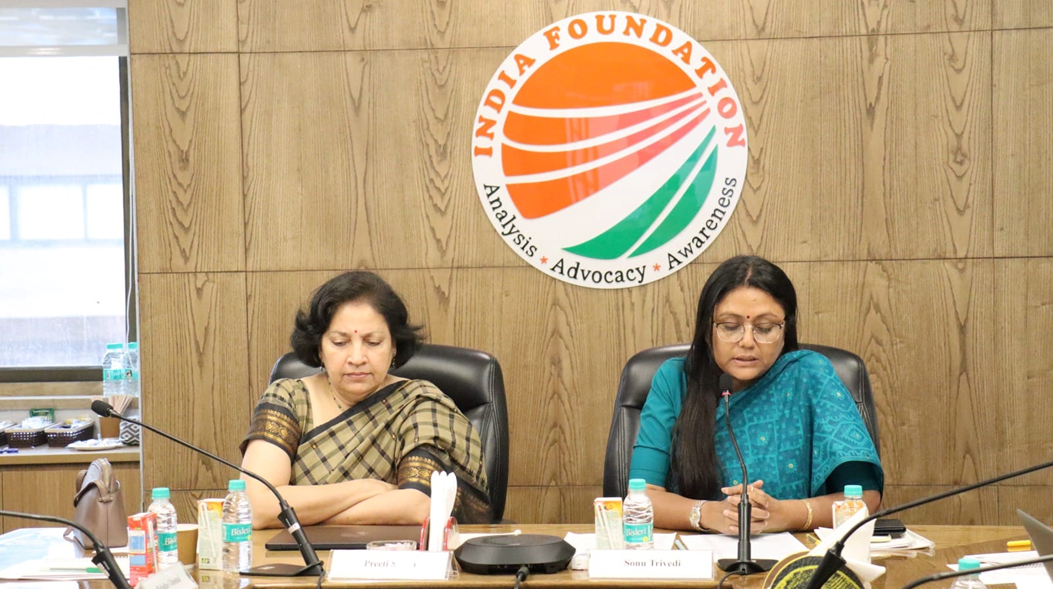
The first Working Session was based on the theme ‘Maritime Trade and Economic Engagements between Kalinga and Champa in Southeast Asia’ and was chaired by Prof Chintamani Mahapatra, Former Rector and Professor of American Studies, SIS, JNU who spoke about the dynamic nature of history and the importance of careful word choice in historical reports and also highlighted the strategic partnership with Vietnam as part of India’s Act East Policy.
Mr Abhishek Mohanty, Research Scholar in International Relations, Saint Petersburg State University, Russia began his presentation on maritime engagement and spoke about the historical connections between Kalinga and Southeast Asian countries, especially Vietnam, Indonesia, Cambodia, and Malaysia. The Bali Yatra festival in Odisha was mentioned as a symbolism of celebration of historical maritime connections between the two regions. The similarities between Kalinga and Tamil kingdoms in their connections with Southeast Asia were highlighted. He discussed the trade items from Kalinga that included diamonds, ivory, spices, medicines, textiles, and fabrics and about the port of Pithunda in Andhra Pradesh as a significant trade hub for Kalinga and Champa.
The historical evidence of foreign merchants visiting Pithunda was discussed, including an inscription at Khandagiri Hills in Odisha. The legend of Samudrapala, the son of the seas, was mentioned as a historical connection between Kalinga and Champa. Mr Mohanty also underlined the importance of careful word choice in historical narratives to avoid negative connotations with preference to terminologies like “assimilation” and “exchange” and focus on the peaceful and cultural exchanges. He concluded his presentation with a call for careful consideration of historical narratives to promote cooperation.
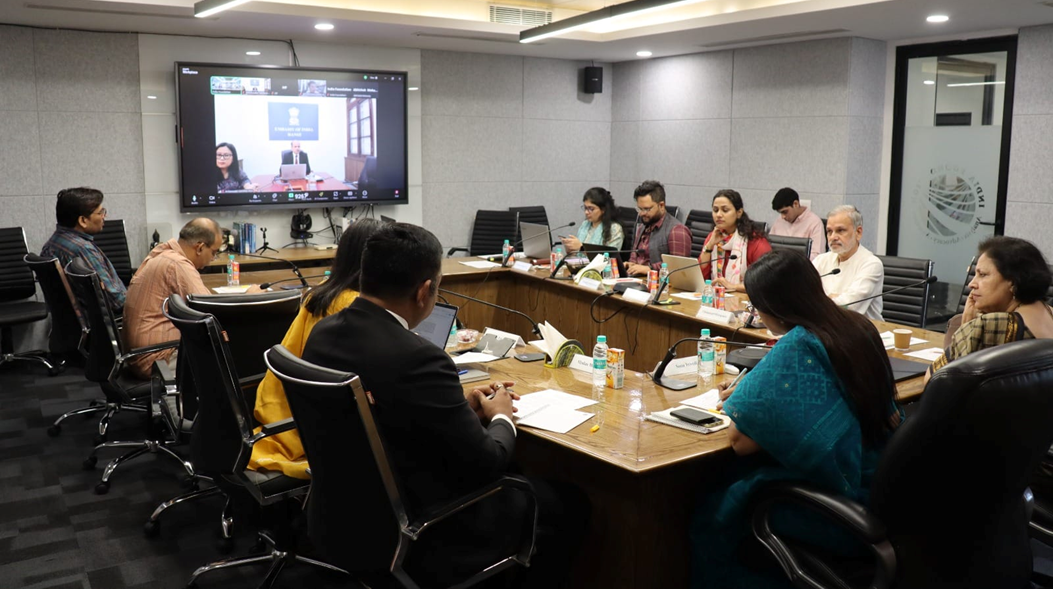
Dr Do Truong Giang, Head of Department of Science Management and International Cooperation, Institute of Imperial Citadel Studies (IICS), Vietnam Academy of Social Sciences, Hanoi, Vietnam, began his presentation with focus on the maritime trade and history of Champa from an archaeological perspective. He referred to a map that showed the location of Champa and its connections with Java, southern India, and Kalinga and discussed the influence of Indian and Chinese civilizations on Champa, emphasising the need for more research on this topic. Through his presentation, he aimed to fill gaps in understanding the maritime trade and cultural exchanges in Champa and spoke about the influence of Indian culture on Champa. He highlighted recent studies by Vietnamese and international scholars that shed light on the influence of Chinese and Middle Eastern civilizations on Champa, particularly during the 8th to 13th centuries. He emphasised on cross-cultural trade and exchange in the region, underscoring the pivotal role of maritime activities as recognised by scholars like Michael Vickery.
Dr Giang spoke in detail about Champa’s active trade networks, showcasing commodities such as silk, rose water, and ceramics, alongside the goods it provided for international markets. The historical significance of Amaravati and Nagara style of architecture in Champa’s cultural and economic landscape was highlighted, with images and maps illustrating the distribution of Hindu and Buddhist sanctuaries. Archaeological evidence, including ceramics, inscriptions from various regions, and a 9th-century shipwreck, underscored the centrality of maritime trade to Champa’s economy. The translations of inscriptions on artefacts provided valuable insights into the trade routes and connections, revealing links with regions like Kalinga and the Arab world as well. He concluded his presentation by emphasising on the need for further research and collaboration between Vietnam and India to deepen the understanding of long-distance trade and cultural exchanges in Champa.
Dr Ashwin Parijat Anshu, Assistant Professor, Department of History, Zakir Husain Delhi College, University of Delhi addressed the key issues regarding the historical and cultural relations between India and Southeast Asia, as well as the broader understanding of Southeast Asia. He emphasised on the importance of openly discussing these topics to highlight the historical connections between the two regions and critiqued the Eurocentric approach prevalent in historical pedagogy, where concepts and narratives are predominantly derived from Western frameworks. He sought to challenge these biases and advocated for a more balanced understanding of history that incorporates Southeast Asian and other regional viewpoints. He explored the rich and often overlooked maritime relations between India and Southeast Asia, and highlighted the significant roles played by Indian seafarers, merchants, and ‘religious merchants’ in fostering these connections. He critiqued the conventional narratives of ancient India, which tend to focus predominantly on caste and gender issues and advocated instead for a more cosmopolitan view of Indian history.
He spoke about the concepts of Shruti and Smriti and highlighted their dual role as both imaginative and empowering forces in Indian history. He mentioned the use of Ramayana as a compelling example of cultural memory that has been reshaped and adapted within Southeast Asia, integrating local traditions while retaining its core essence expressing a fluid and dynamic nature of cultural traditions that is evident in the continued presence of Indian stories, rituals, and practices across Southeast Asia. Dr Ashwin underscored the maritime relations between India and Southeast Asia as a living testament to the enduring cultural memory and vibrant exchange between these regions, reflecting a history that is dynamic, interconnected, and deeply relevant even today. He delved into the genre of Tapoi Katha, a storytelling tradition associated with the Karthik Purnima festival in Bali, which integrates rituals and narratives and are centred around the traditional Indian merchants (Sadhavas), highlighting their adventures and experiences as they travelled to Southeast Asia. He argued that such living accounts, rooted in oral traditions, should be included in historical narratives, as they provide a dynamic perspective on the past that goes beyond archival records. The Sadhavas were portrayed not merely as traders but as agents of cultural exchange and spiritual influence, embodying values of honesty and nobility. He also emphasised on the harmonious coexistence of diverse faiths in Southeast Asia, including Buddhism, Shaivism, and Islam, as a significant aspect of the region’s history which highlighted the fluid and inclusive nature of these exchanges and thus advocated for a broader, more integrated view of history.
Additionally, Dr Ashwin pointed out the underrepresentation of Southeast Asia in Indian academic curricula, noting that many Indian universities do not teach its history and this omission further reinforcing mainstream narratives that overlook the region’s interconnected past with India. He noted that teaching Southeast Asian history should be seen as an opportunity to reimagine historical frameworks and challenge conventional perspectives, promoting a more inclusive and nuanced understanding of the shared cultural heritage. He advocated for a more comprehensive approach to historiography by incorporating archaeological evidence and religious texts alongside traditional historical methods and argued for a nuanced historiographical approach, which would integrate diverse sources and could provide a deeper and richer understanding of the past. He concluded by stressing the need to reimagine Indian history to include its rich cultural exchanges with Southeast Asia and advocated for a more creative and inclusive historiographical approach that reflects the complexity and diversity of India’s historical connections, offering a broader perspective on its enduring legacy.
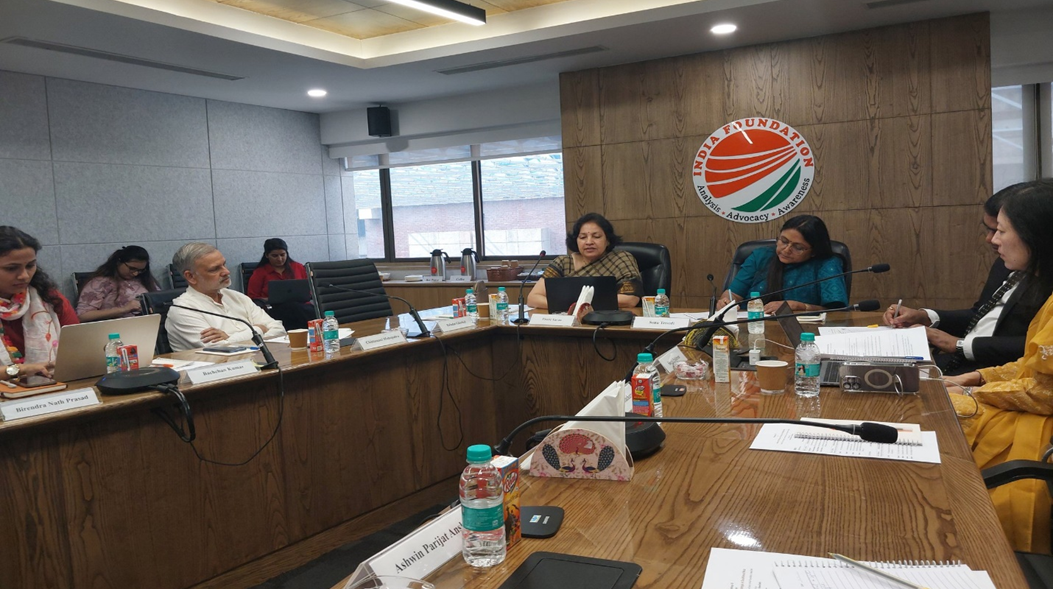
The second Working Session was based on the theme, ‘Political and cultural influence of Kalinga on Champa in Southeast Asia’ and was chaired by Prof Baladas Ghoshal, former Professor of Southeast Asia and South-West Pacific Studies, JNU. He mentioned the overlap of Hinduism and Buddhism in Southeast Asian societies, which contributed to the enduring impact and ideological influence of Indian culture in Southeast Asian societies. He also spoke about the regional dynamics of India, China and Southeast Asia, highlighting the importance of cultural influences in international relations and the need for India to package its cultural offerings with modern relevance.
Dr G. B. Harisha, Former Director, Swami Vivekananda Cultural Centre, Hanoi, underscored the importance of collaborative efforts with local scholars to deepen the study of Indian cultural influences on Southeast Asian societies. He highlighted the need to examine the political and cultural impacts of Indian traditions in the region, sharing personal experiences from his tenure at the Indian Embassy, where cultural exchanges between India and Southeast Asia were pivotal. He envisioned joint studies as opportunities to produce significant contributions to research on cultural and historical linkages. He emphasised the potential for further research into the connections between Kalinga and Southeast Asia to provide richer insights into India’s historical and cultural influence. He stressed the value of recognising these interconnections in broader discussions of Southeast Asian history. The session concluded with a call for expanded research to enhance understanding of the cultural and political ties between India and Southeast Asia, emphasising the enduring relevance of these historical connections in contemporary scholarship.
Dr Anamika Sinha, Assistant Regional Director, Lucknow, IGNOU, began her presentation by delving into the political and cultural impact of Kalingan temples and their far-reaching influence on Southeast Asia. She emphasised on the rich cultural heritage of India and the guiding philosophies behind Indian expansion through both land and sea routes. Highlighting Kalinga’s strategic geographical location, Dr. Sinha underscored its pivotal role in facilitating international trade and commerce. The presentation drew on historical references to Kalinga from the Mahabharata, showcasing its formidable political, social, and cultural power. Kalinga’s position on the Bay of Bengal and its prominence in the Indian Ocean trade network were explored, supported by insights from Sanskrit literature and historical accounts. Dr Sinha discussed the profound influence of Kalinga on these maritime routes, which shaped regional interactions and economic exchanges. A key point in her presentation was the migration of Kalingan traders to Southeast Asia following Ashoka’s conquest of Kalinga which led to the establishment of Indian colonies in the region, further solidifying Kalinga’s cultural and economic footprint abroad. The influence of Kalinga on Champa was particularly emphasised, with historical evidence illustrating the religious and cultural exchanges between the two regions.
Dr Sinha highlighted the enduring legacy of Kalinga in shaping Southeast Asian history and culture, demonstrating how its contributions to trade, religion, and philosophy extended India’s impact across the seas. She explored the early Buddhist influence in Champa, emphasising the role of Buddhist monks and the establishment of Buddhism in the region. She highlighted the later rise of Hinduism in Champa, supported by archaeological and literary evidence, illustrating the profound impact of Hindu culture. The establishment of Champa’s first Hindu kingdom by Indian merchants was particularly noted, showcasing the dissemination of Hindu culture and its integration into local traditions. The presentation also delved into the political impact of Champa on neighboring regions like Thailand, with a specific focus on the influence of Indian legal texts on Champa’s administrative system. She described the political structure of Champa, where the king was regarded as the supreme authority, drawing parallels with Indian administrative practices. The similarities between the governance systems of Kalinga and Champa were highlighted, particularly in the king’s central role in decision-making and administration. The cultural influence of Kalinga on Champa was emphasised through the prevalence of Brahminical religion and the worship of the Hindu Trinity. These connections underscored the deep-rooted ties between the two regions, which were facilitated by trade, migration, and shared religious practices. In conclusion, the speaker summarised the key points, reaffirming the cultural and political linkages between Kalinga and Champa and the enduring legacy of these interactions in shaping the historical and cultural landscape of Southeast Asia.
Dr Birendra Nath Prasad, Assistant Professor, Centre for Historical Studies, JNU, delved into the historical connections between Champa and Odisha and traced the socio-economic background of central Vietnam and the role of Hindu temples, particularly those dedicated to Siva, as integral to the region’s cultural and socio-economic fabric. Central Vietnam’s strategic importance as a frontier for global trade was emphasised, highlighting the region’s role as a crossroad for early globalising religions like Hinduism. Dr Prasad discussed the geographical division of the area, where the southern zone was heavily influenced by Indian culture, while the northern zone remained under Chinese imperialism. The evolution of maritime trade between India and Southeast Asia was presented as a pivotal factor in the rise of Hinduized kingdoms in southern Vietnam and Cambodia. Archaeological findings, such as Tamil Nadu’s rounded ware pottery discovered along the eastern coasts of India and Southeast Asia, provide tangible evidence of these ancient connections. The presentation emphasised on the importance of Hindu temples in Champa, which served as socio-economic and political hubs. These temples, often dedicated to Siva, marked a cultural transition from Vaishnavite to Shaivite traditions starting in the fourth century AD. Local elites played a key role in temple construction, securing revenue-free land from the king, which in turn created new resource bases and strengthened social solidarity.
Geographically, Champa’s narrow coastal plains and mountain ranges shaped its fragmented political landscape. Despite this, the region maintained cultural unity through the mandala system, where political elites from river-mouth areas periodically rose to prominence and formed alliances. Temples acted as cultural and institutional nuclei, either commissioned by royalty or initiated by communities, fostering cohesion and social order. Dr Prasad also explored the decline of Funan and the emergence of Champa as a Hinduized kingdom. He underscored the significant role of maritime trade routes in facilitating cultural and religious exchanges, which laid the foundation for the region’s Hinduized states. By reconsidering established notions of Hinduism, he highlighted its dynamic maritime expansion and its role in shaping the socio-economic and cultural landscapes of Southeast Asia.
In conclusion, Dr Prasad called for further research to better understand the socio-economic roles of Hindu temples in Champa and their influence on trade and cultural unity. He stressed the importance of exploring maritime trade routes and their contributions to the development of Hinduized kingdoms in Southeast Asia. His presentation advocated for a broader perspective on Hinduism’s adaptive and expansive nature, emphasising its critical role in fostering cultural exchange and maritime connectivity.
Ms Shivani Badgaiyan, Research Fellow, India Foundation, highlighted the growth of Hinduism in Champa from 3rd to 15th centuries CE, that exemplified a rich cultural exchange between India and Southeast Asia. She talked about the introduction of maritime trade and cultural interaction through which Hinduism profoundly shaped Champa’s religious practices, societal norms, and architectural achievements. The key influences included Saivism and Vaisnavism, with temples like My Son and Po Nagar that served as major centers of worship dedicated to deities like Shiva and Vishnu. She underlined the importance of those temples that blended Indian architectural elements, such as shikhara towers and makara toranas, with local artistic styles, creating a unique cultural identity. She also mentioned Hindu epics like the Ramayana and Mahabharata that further enriched Cham traditions, embedding Indian spiritual and cultural narratives into the region’s legacy.
Ms Shivani spoke about Hinduism’s prominence that was supported by Cham rulers, who used religious rituals and temple patronage to legitimise their authority, aligning themselves with divine figures such as Shiva. Saivism, in particular, dominated the spiritual landscape, with widespread worship of linga and associated deities. She underscored the importance of the adaptation of Hindu practices which were influenced from Indian social customs, including vegetarianism, widowhood rituals, and the temple Devadasi tradition. Though Mahayana Buddhism rose in the 9th century under King Indravarman II, Hinduism’s legacy persisted, showcasing a remarkable example of syncretism and religious tolerance in Champa’s cultural evolution. She concluded by mentioning that despite its decline due to changing political and religious dynamics, Hinduism left an enduring impact on the art, architecture, and spiritual life of the region.
The third Working Session was based on the theme, ‘Archaeological findings highlighting the connections between Kalinga and Champa’ and was chaired by Dr Sonu Trivedi, Distinguished Fellow, India Foundation and Associate Professor, Zakir Husain Delhi College, University of Delhi.
Mr Tran Ky-Phuong, Senior Research Fellow, Association of Vietnam Archaeological Studies and Ms NGUYEN Thi Tu Anh, Lecturer, Faculty of Cultural Studies, University of Social Sciences and Humanities, Vietnam National University, Ho Chi Minh City, delved into the extensive maritime connections between Southeast Asia, East Asia, and South Asia, with a particular focus on the vital role of seaports of Champa. The prosperity of Champa’s seaports was attributed to their strategic location and capacity to provide luxury goods and resources. Mr Tran highlighted the connection between India and Japan via Champa, presenting Japan as a significant hub for cultural and philosophical exchange. Champa’s geographical advantages, including its river network, were instrumental in facilitating trade and transportation.
An overview of Champa’s archaeological evidence revealed artifacts dating back to the second or third century. Items such as bronze mirrors and agate objects from China and India illustrated a robust cultural exchange. The influence of Buddhism in Champa was evident from Buddhist artifacts and religious activities, while the distribution of items like lion-shaped agate objects to active trade routes passing through Champa. He also referenced Chinese historical records describing early states in Champa and hypothesised about its political system, including the mandala concept. Notably, the name ‘Champa’ was believed to be derived from a local flower, with the oldest inscription mentioning a king further underlining its unique historical identity.
Champa’s economic wealth, bolstered by a thriving luxury trade in items such as sandalwood and ivory, was emphasised. Its geographical features, including mountains, islands, and river networks, provided natural defenses and valuable resources, reinforcing its strategic importance. Mr Tran underscored the richness of Champa’s archaeological evidence as a testament to its historical significance and cultural influence. He concluded by calling for continued research to deepen understanding of the historical and cultural connections between India and Southeast Asia. The enduring legacy of Champa’s seaports, economic systems, and religious exchanges was highlighted, along with the potential for future studies to explore missing links and uncover further insights into this historically significant region.
Dr Bachchan Kumar, former Consultant, South East Asian Studies, IGNCA, New Delhi, began with an overview of the name ‘Southeast Asia’, exploring its significance in Sanskrit and its connection to the region’s historical and cultural identity. The discussion highlighted the Cham Kingdom’s adoption of the Shiva deity Bhadreswara, emphasising its importance as a dominant figure in Cham culture and reflected on the influence of Indian religious traditions. He explained how the Cham people integrated Shiva worship into their spiritual practices, blending it harmoniously with elements of Buddhism and Jainism.
The historical context of the Cham Kingdom was explored, including its expansive geographical spread and the prominence of its ports, which were vital for trade and cultural exchange. The architectural grandeur of Cham temples was highlighted, noting their Tamil-inspired features and innovative use of sandstone and brick. These temples, central to Cham religious life, demonstrate the fusion of local traditions with Indian architectural styles. Philosophical influences, particularly Buddhism’s concept of Shunyata Dharma (emptiness doctrine), were also discussed, showcasing the depth of spiritual thought in Cham culture. Significant artifacts, such as the bronze Sakya Muni and Rachana Paramita statues, were cited as iconic representations of this blend of influences.
Dr Kumar further elaborated on the interplay of Shiva worship with local traditions, as seen in the integration of Chintamani (a wish-fulfilling gem) and the Prajnaparamita Sutra into Cham religious practices. Modern practices of the Cham people were also explored, including temple worship and the celebration of the New Year, which reflect the enduring presence of Hindu traditions within the community. Examples of contemporary artwork and traditional practices illustrate how Cham culture continues to honour its rich heritage. He concluded by emphasising on the importance of understanding the historical and cultural significance of the Cham Kingdom and its enduring legacy in Southeast Asia.
Dr Abira Bhattacharya, Assistant Curator, National Museum, New Delhi, began by introducing her research focused on the iconographic analysis of devotional items in Champa art, particularly highlighting the Shakti and Shaiva traditions and their interconnections with ancient Orissa. She explored the development of female deities in Champa, including Uma, Saraswati, Durga, Mahishasura mardini, and the Saptamatrikas, showcasing how these deities reflect the region’s evolving artistic and spiritual traditions. The sculptures from Champa were noted for their simplistic style, yet exhibiting a distinct hybrid influence from Southeast Asian art, making them unique in their visual language.
Attributes like the Hansa (swan) associated with Saraswati and the specific iconographic elements in Champa art were discussed, along with the evident influence of Kalinga art. For instance, Lakshmi and Indrani sculptures illustrate the cultural and artistic connections between Champa and Kalinga. The role of Shiva Acharyas was emphasised in shaping Champa’s sculptures, especially within the Pashupata sect, which influenced the development of both Shakta and Shaiva traditions. Dr Bhattacharya also highlighted the syncretic role of Lakshmi in Champa art.
A comparative analysis between Champa and Kalinga sculptures reveal fascinating parallels, such as the depiction of 16-armed forms and the inclusion of Nandi. The impact of texts like the Natya Shastra and other Shiva Shastras is apparent in the iconographic elements of Champa sculptures. Despite their rootedness in Indian traditions, Champa sculptures retain a simplistic and hybrid form that reflects their Southeast Asian milieu. Unique features, such as the Veena Dhari (veena-holder) and a 28-armed Nandi, further distinguish Champa art from its Indian counterparts. The presentation underscored the importance of Shiva Acharyas in guiding the development of Champa’s artistic traditions and connecting them to Kalinga’s cultural legacy. She concluded by emphasising on the significance of studying the cross-cultural influences that shaped Champa art, particularly its ties to Kalinga and Southeast Asian art. The simplistic yet unique nature of Champa sculptures highlight their distinctiveness, providing rich potential for further research on their iconography and cross-cultural connections.
The Valedictory Remarks were given by Dr Madan Mohan Sethi, Former Consul General of India, Ho Chi Minh City, Vietnam. He elaborated on the strong cultural ties between Kalinga and Champa. Highlighting Vietnam’s deep respect for its historical traditions, he spoke about the Cham culture and Annam culture. A significant portion of Vietnam’s artifacts and statues—approximately 80-90%—were classified as Hindu or Buddhist, underscoring the shared cultural and religious heritage between India and Vietnam. Dr Sethi emphasised on the importance of developing personal strategies to deepen the understanding of these historical connections.
The growing cultural partnerships between India and Vietnam were seen as a positive development, particularly through the increase in collaborative research meetings and the rising number of Vietnamese students pursuing education in India. Drawing from personal experiences during his tenure in Vietnam, he vividly described the beauty of artifacts and the mythological stories intricately etched on stones, which served as a testament to the shared cultural legacy. He also underlined the need for preserving these invaluable cultural heritage sites, viewing them as a bridge between the past and future.
In conclusion, he stressed upon the importance of government support in safeguarding and promoting cultural heritage. Expressing gratitude to the other speakers for their contributions, he requested for further study and collaboration, reaffirming the value of joint efforts in preserving and understanding the rich historical ties between India and Vietnam.

Key Takeaways:
The workshop explored ancient maritime and cultural linkages between Kalinga and Champa. Emphasis was placed on shared civilizational heritage, particularly in the form of art, architecture, religion, and trade. The Key Takeaways are as follows:
- The economic ties between Kalinga and Champa were multi-faceted and deeply transformative, shaping not only the commercial prosperity of both regions but also their shared cultural and civilizational identity. These maritime trade relationships stand as early examples of pre-modern globalization in the Indian Ocean world.
- The geographical positioning of Kalinga and Champa played a decisive role in shaping a transregional civilizational bridge. Their coastal proximity, navigational advantages, and complementary economies made sustained contact both feasible and beneficial, paving the way for centuries of cultural and economic exchange.
- The emphasis on trade in both Kalinga and Champa inscriptions underscores the maritime link between the two regions. The inscriptions often mention merchants, seafaring expeditions, and economic prosperity, highlighting the importance of maritime trade to both kingdoms.
- The political institutions in Kalinga and Champa shared remarkable similarities due to sustained cultural diplomacy, religious patronage, and elite interaction. Political legitimacy in both regions was sacralised, blending monarchical authority with religious symbolism, and reinforced through temple construction, Sanskrit epigraphy, and Brahmanical rituals.
- Champa followed the mandala (circle of kings) system: a central king governed over semi-autonomous regions, each controlled by local rulers or vassals who paid tribute. These regions (mandalas) included centres like Amaravati, Vijaya, Kauthara, and Panduranga, each with its own political and cultural identity but acknowledging the overlordship of the main king.
- The political systems of Kalinga and Champa showcase the evolution of Indianized statecraft in Southeast Asia. While Kalinga served as a source of political and cultural models, Champa adapted and localized these institutions, blending them with indigenous practices. This resulted in political systems that were hierarchical, religiously legitimated, and functionally flexible, with temples, kings, and Brahmins playing central roles in both governance and society.
- Royal sculpture and temple art depicted kings in divine postures, establishing their cosmic role in maintaining dharma and social order. Temples were used as political symbols and royal patronage in the form of religion and art were used to legitimise power. Historical records suggest that intermarriage between families from Kalinga and Champa. These alliances helped strengthen political and cultural ties.
- Temples became centres of not just worship but also social organization, education, and diplomacy. Temples were used to display power, assert legitimacy and divine sanction. They played a critical role in defining and sustaining the social hierarchy. They were also centres of learning, preserving and disseminating religious texts, philosophy, arts, and science.
- The Champa inscriptions often exhibit similar stylistic elements to those found in Kalinga, such as the use of Brahmi and Kharosthi scripts. The religious practices described, such as the building of temples and dedication of statues, parallel what is found in Kalinga inscriptions from the same period.
- In Champa, inscriptions from the 4th to 7th centuries often mention Hindu gods like Shiva and Vishnu, but there is also evidence of Buddhist influences. Many Champa inscriptions reference the construction of temples dedicated to Hindu deities, as well as mentions of Buddhist stupas, indicating the blending of Hinduism and Buddhism in the region.
- The Champa people, like those in Kalinga, were skilled in stone-carving and architecture. Several temples and monuments in Champa resemble those in Kalinga, with similar iconography, architectural style (like the use of ornate carvings), and religious symbols. Both cultures developed elaborate architectural styles to honour their deities and royal figures.
- Champa rulers often claimed Kshatriya descent and associated themselves with Indian dynasties like the Pallavas or the Kalingas to legitimize their authority. The Brahmins from Kalinga integrated into the Champa elite structure, often serving as priests, astrologers, educators, and advisors. These religious figures reinforced Indian social hierarchies in Cham social structure.
- Merchant guilds from Kalinga migrated and established temporary communities in Champa. These communities often retained cultural practices from Kalinga and acted as intermediaries between local societies and foreign traders.

